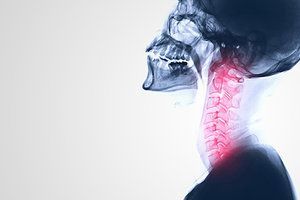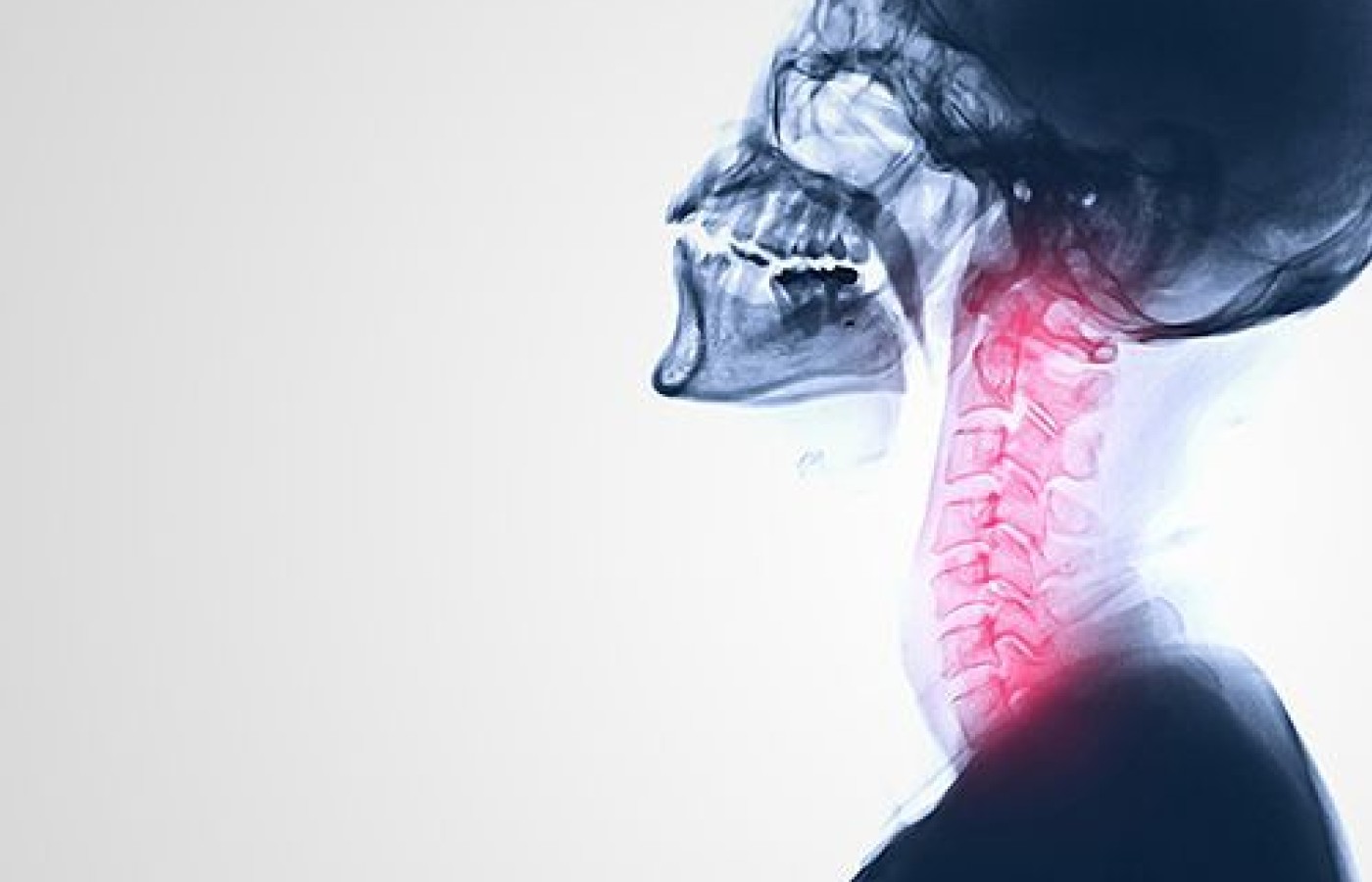On Oct. 21, 2025, a judge in Florida issued a groundbreaking decision in Complete Care v State Farm, 25-CA-1063. It concerns a fact pattern that many chiropractic doctors have faced wherein an insurer, such as State Farm or Allstate, decides to simply stop paying all claims submitted by a healthcare provider.
| Digital ExclusiveDiagnosing Acute Disc Herniation With the Follow-Up X-Ray (Pt. 2)
Editor's Note: Part 1 of this article appeared in the May issue.
An interpretation of the length of listhesis is summarized below following the administration of a proper cervical follow up X-ray. The follow-up XR will help you uncover acutely sprained posterior and anterior longitudinal ligament injuries of varying degrees, which will be shown to be the primary ligaments injured in a TMVA sprain / subfailure injury.13 When no anterolisthesis or posterolisthesis is present, no anterior or posterior longitudinal ligament sprain is identified.
One (1) mm of anterolisthesis or posteriorlisthesis indicates a sprain (i.e., ligamentous subfailure) injury of the anterior longitudinal or posterior longitudinal ligament, respectively.14 A break in George's line is suspicious of a 1 mm listhesis until measured.15
Croft writes that anterior subluxation relates to recent trauma or delayed instability in the case of a posttraumatic incident. Radiographic evidence of anterior subluxation of 1-2 mm relates to clinical instability.16

Delayed instability has been indicated to occur at the rate of 5-21 percent of TMVA cases developing clinically following the cessation of cervical musculature splinting.16 Ligamentous creep may eventually be a factor in delayed instability.17 Croft notes a relative contraindication to manipulation of intersegmental instability when observed.18
Two (2) mm of anterolisthesis or posteriorlisthesis indicates a more severe sprain-type injury of the anterior longitudinal or posterior longitudinal ligament, respectively, and the potential exists for neurological injury to include SCI.5,19
Let's Look at the Research
Pinter, et al., tested the "tensile breaking force" of spinal ligaments. His team determined that the anterior longitudinal ligament was significantly stronger than the posterior longitudinal ligament.20
Tominaga, et al. (including Punjabi and Ivancic), conducted a study to determine the dynamic failure properties of human cervical spine ligaments that were exposed to cervical acceleration-deceleration trauma. The study, like the study above by Pinter, evaluated the failure force of the spinal ligaments, but also included the force to elongation failure of the middle third disc (MTD).
The middle third disc failed significantly earlier than the anterior (ALL) or posterior longitudinal ligament (PLL).The MTD study sample was only able to elongate to 1.4 mm prior to failure. The PLL could withstand 3.9 mm of elongation prior to failure. The ALL could elongate to 3.0 mm prior to failure. The capsular ligament (CL) could elongate to 4.5 mm prior to failure.19
Punjabi and White write that the identification of a "malalignment of 2 mm or more or vertebral body damage plus posterior element damage, increases the incidence of associated neurological deficit up to 61%."5 The authors go on to describe that due to the traumatic forces imparted to the body {through kinetic energy transfer of the TMVA), observations made on a posttraumatic radiographic study are actually the "residual deformation" of the injured vertebrae / ligamentous structures.
The initial postaccident vertebral movement had been made into an "elastic range" and even deeper into the "plastic range."5 This was made possible by the elastic nature of the uninjured ligaments described by Tominaga, et al., above. Ligamentous structures may have the potential for even more significant neural injury if the vertebrae have moved into the "plastic range."
Movement into the "plastic range" may cause additional damage to neural structures including the spinal cord; but are observed on postaccident imaging to reside entirely in the "elastic range" that is now demonstrated by "residual deformation."5
Predicting Cervical Disc Herniation
Since 2015, I have engaged in a heuristic evaluation to predict if a PLL ligamentous subfailure / sprain measuring 2 mm identified on the flexion or neutral view of the follow-up X-ray series would demonstrate a traumatic cervical central disc herniation (1.44 mm elongation failure point) on MRI.19
In almost every instance, MRI confirmation of a traumatic cervical disc herniation was observed at the central aspect of the intervertebral disc.5,14-15,19 The 2 mm of anterolisthesis, regardless of the direction of the collision impact, demonstrated a "residual range" of "damage displacement" of the PLL described by White and Panjabi that had resulted from the TMVA.5,20
On occasion, a disc herniation did not occur at the 2 mm anteriorlisthesis segment. The disc herniation occurred at an adjacent level, or even two segments caudal or cephalad to the "damage displacement" level. Panjabi and White describe this phenomenon as due to a "spontaneous reduction" following the "damage displacement" caused by the TMVA.5
In clinical practice, acute traumatic cervical disc herniation was observed, on average, in 30 percent of cases presenting to the office for treatment utilizing this heuristic strategy of evaluation of follow-up XR in both adults and children when a 2 mm anterolisthesis was observed.
In my experience, 95 percent of traumatic cervical disc herniations are at the central location and only found through evidence produced by the results of the follow-up X-ray study approximately 3-4 weeks following the date of injury (DOI) or on later follow-up MRI due to persisting neck pain.
This 30 percent positive disc herniation is consistent with a study by Giuliano, et al., comparing MRI evaluation of 100 non-injured (control) and 100 acute traumatic cervical-spine-injury patients. The study demonstrated a 28 percent positive cervical herniation rate for TMVA patients.21 Croft notes a relative contraindication to manipulation of traumatic disc herniation when observed.18
The 3.5 mm represents a high likelihood of clinical instability as described by Panjabi and White. They note that this level of translation relates to the upper level of allowable movement.16 A surgical consultation is recommended, as this level of instability may indicate frank dislocation.16 MRI examination should be performed immediately to determine the exact nature of the translation.
Spinal-cord injury without radiographic abnormality (SCIWORA) in children can be evaluated by follow-up XR when symptoms continue into the third week in the age 8 and younger post-TMVA patient.22
Clinical / Coding Considerations
In consideration of the above information, I have elected to refrain from cervical spine manipulation until a follow-up XR study has been performed to ensure patient safety and avoid therapeutic culpability. Thankfully, our code (CPT code 98940) for manipulation/adjustment allows for 1-2 areas of treatment, but does not mandate the manipulation/adjustment of two distinct regions to comply with the code's use.23 (For example, In a cervical and thoracic MVA injury, manipulation of the thoracic spine would be coded 98940, just the same as if manipulation of the cervical and thoracic spine were performed.)23
These clinical findings and objective evidence of the traumatic injury have brought significant value and support to my cases, as they certainly would to your TMVA cases. Additionally, improved recovery time frames will occur when early recognition of these injuries and proper case management are provided.
References
13. ACR Appropriateness Criteria, Suspected Spine Trauma. American College of Radiology (ACR). Access here
14. Lin RN, Characteristics of sagittal vertebral alignment in flexion determined by dynamic radiographs of the cervical spine. Spine, 2001 Feb 1;26(3):256-61.
15. Eggleston S. "Accurate Prognosis in Personal Injury Cases Using George's Line." Dynamic Chiropractic, March 26, 2010.
16. Foreman S, Croft C. Whiplash Injuries: The Cervical Acceleration/Deceleration Syndrome; 2nd Edition. Philadelphia: Lippincott Williams & Wilkins, 2002; p. 53.
17. Como J, et al. Cervical spine injuries following trauma. J Trauma, Sept. 2009;67(3):651-9.
18. Foreman S, Croft C, Op cit; p 469.
19. Tominaga Y, et al. Neck ligament strength is decreased following whiplash trauma. BMC Musculoskel Disord, 2006;7(103):8.
20. Foreman S, Croft C, Op cit; p. 13.
21. Giuliano V, Giuliano C, Pinto F, et al. The use of flexion and extinction MR in the evaluation of cervical spine trauma:initial experience in 100 trauma patients compared with 100 normal subjects. Emerg Radiol, 2002 Nov;9(5):249-53.
22. Freheit T. "A Spinal Cord Injury That Can Be Hard to Spot." Dynamic Chiropractic, Aug. 1, 2016.
23. CPT Codes – 98940, 98941, 98943, 98942 – Chiropractic Manipulative Treatment. AMA CPT 2018 Professional; p. 693.



